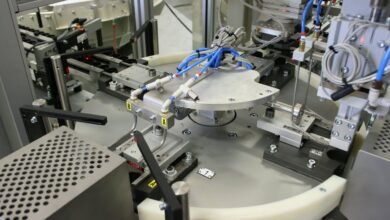Ethernet Cable for Structured Cabling: Cat5e, Cat6, or Cat6a?

When it comes to setting up a robust network infrastructure, selecting the appropriate Ethernet cable is crucial. In New York, where businesses thrive on seamless connectivity, making the right choice can significantly impact performance and reliability. At Monk Cables, we understand the importance of this decision, which is why we’re here to guide you through the options: Cat5e, Cat6, or Cat6a.
Understanding the Differences
Before diving into which cable is the best fit for your structured cabling needs, let’s break down the differences between Cat5e, Cat6, and Cat6a cables.
Cat5e Ethernet Cable
Cat5e, short for Category 5e, is the predecessor to Cat6 and Cat6a cables. It’s suitable for basic networking requirements and supports data transmission speeds of up to 1 Gbps over short distances. While Cat5e cables are more budget-friendly, they may not be sufficient for high-bandwidth applications or future-proofing your network.
Cat6 Ethernet Cable
Now, let’s move on to Cat6 cables. Cat6, or Category 6, cables offer improved performance and bandwidth compared to Cat5e. With support for data transmission speeds of up to 10 Gbps and higher frequencies, Cat6 cables are ideal for demanding environments where speed and reliability are paramount. Monk Cable’s Cat6 Plenum 1000ft option provides even greater versatility and performance, making it suitable for installations in plenum spaces while ensuring optimal signal quality over long distances.
Cat6a Ethernet Cable
Cat6a, the enhanced version of Cat6, takes performance to the next level. With support for data transmission speeds of up to 10 Gbps at 100 meters, Cat6a cables are perfect for high-density networking environments and future-proofing your infrastructure. The “a” in Cat6a stands for augmented, indicating its improved specifications over Cat6 cables. While slightly more expensive than Cat6 cables, the benefits of Cat6a in terms of performance and reliability justify the investment for many businesses.
Making the Right Choice
Now that we’ve explored the differences between Cat5e, Cat6, and Cat6a cables, how do you decide which one is the best fit for your structured cabling needs? Here are some factors to consider:
Bandwidth Requirements: If your business relies on high-speed data transmission and performance, Cat6 or Cat6a cables are the way to go. They provide ample bandwidth to support demanding applications without compromising on speed.
Future-Proofing: Investing in Cat6 or Cat6a cables ensures that your network infrastructure can accommodate future technology advancements and higher bandwidth demands. While Cat5e cables may suffice for now, they may require an upgrade sooner rather than later.
Budget: While Cat6 and Cat6a cables offer superior performance, they come at a higher cost compared to Cat5e cables. Consider your budget constraints and weigh them against the long-term benefits of investing in higher-grade cables.
Installation Environment: If your installation requires cables to be routed through plenum spaces, opting for Cat6 Plenum Cable is essential to ensure compliance with building codes and regulations. Monk Cable’s Cat6 Plenum option provides both performance and safety in such environments.
Conclusion
Choosing the right Ethernet cable for structured cabling is crucial for ensuring optimal network performance and reliability. While Cat5e cables may suffice for basic networking needs, Cat6 and Cat6a cables offer superior performance and future-proofing capabilities, making them the preferred choice for businesses in New York and beyond. At Monk Cables, we offer a range of high-quality Ethernet cables, including Cat6 Plenum 1000ft options, to meet your specific requirements. Contact us today to discuss your cabling needs and elevate your network infrastructure to new heights.



